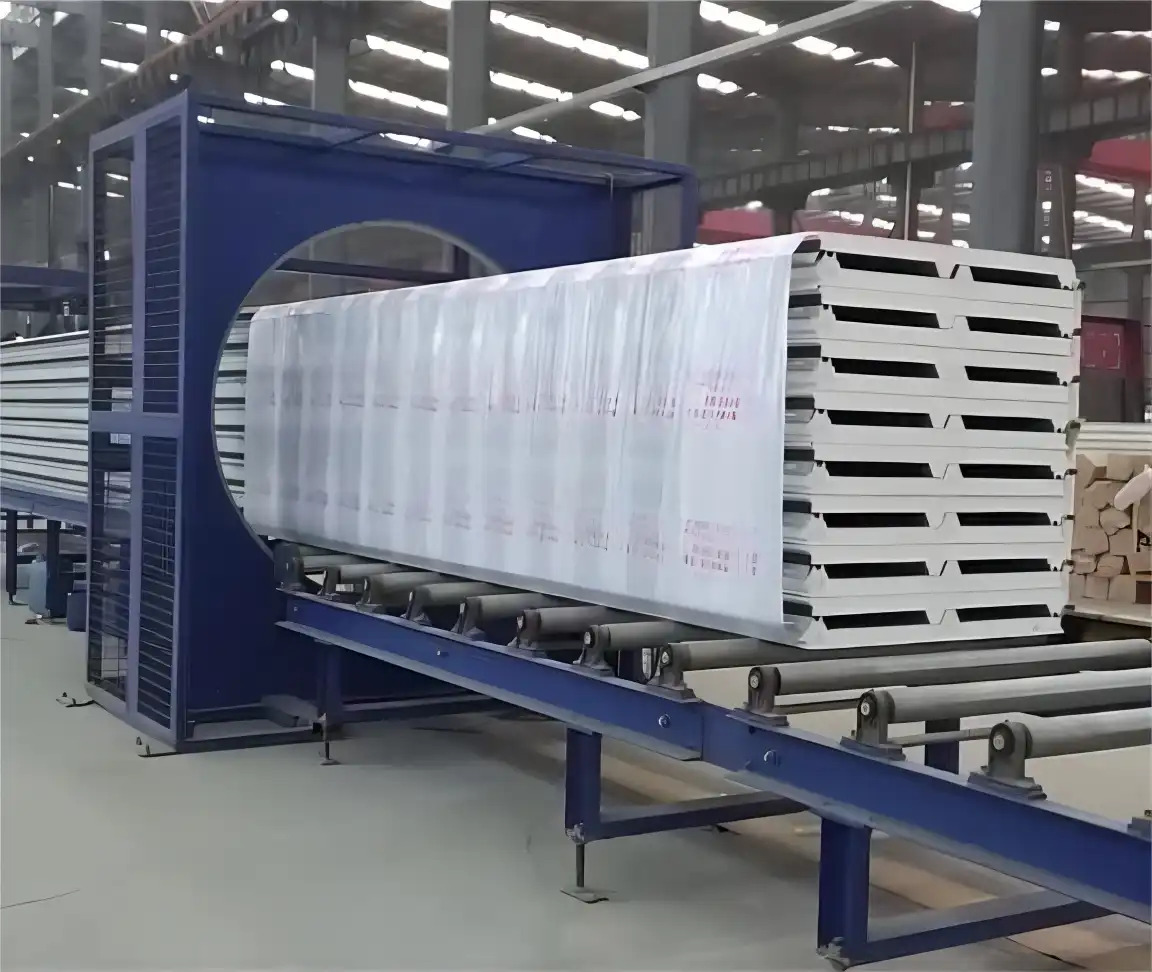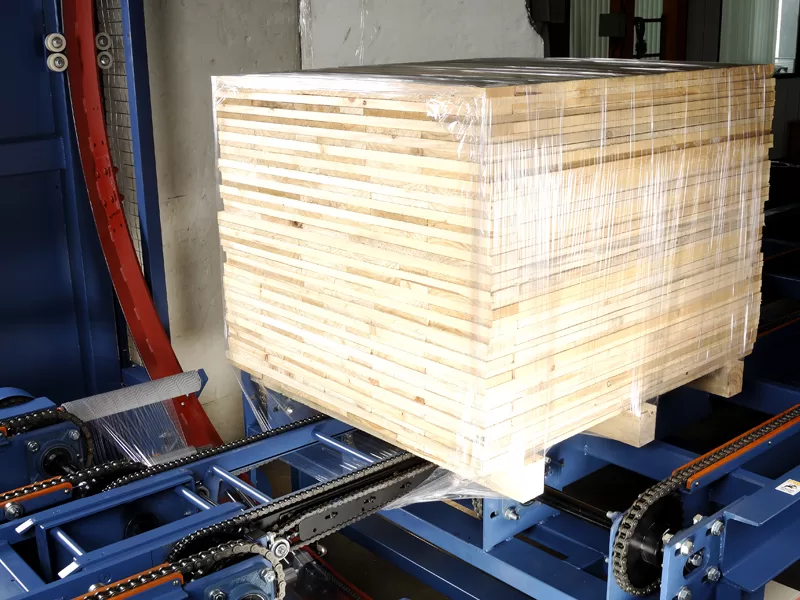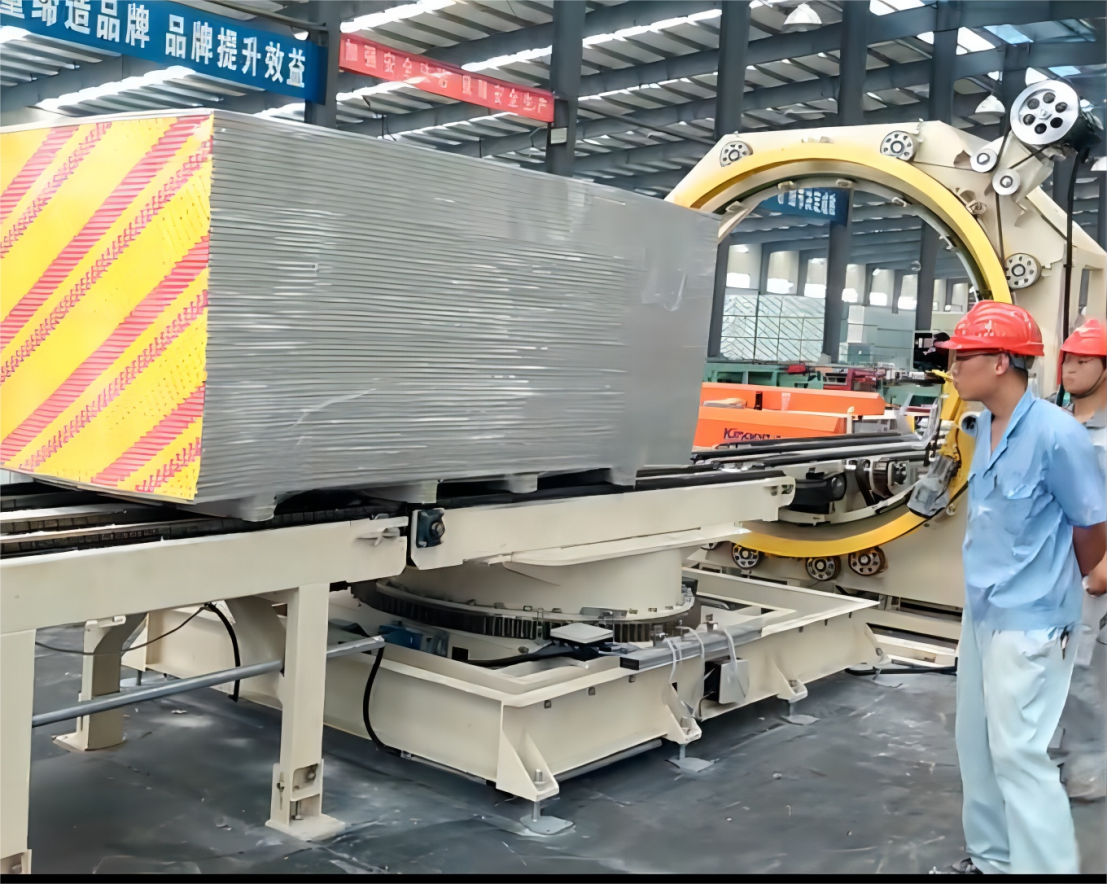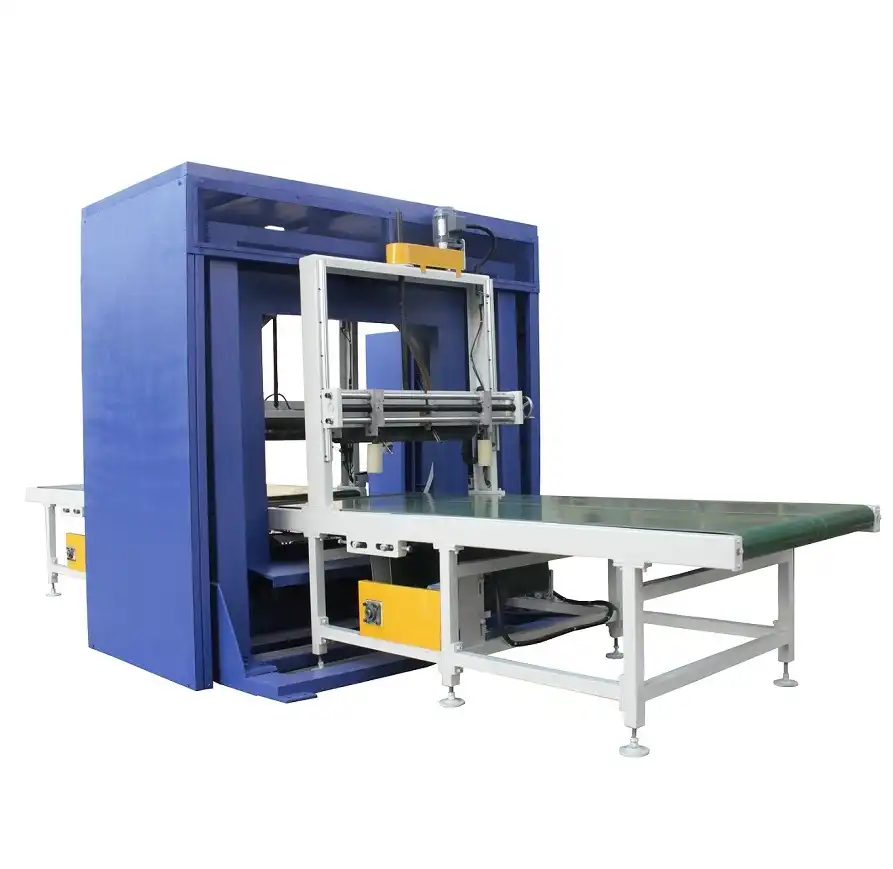Internal Decision Criteria for Selecting a Horizontal Pallet Wrapping Machine
Choosing the right horizontal pallet wrapping machine for your business is not just about finding a device that can wrap your pallets—it’s about selecting a machine that seamlessly integrates with your production line, enhances operational efficiency, and maximizes your return on investment. Given the range of available options, making an informed decision requires a clear understanding of the critical factors that will influence your choice.
In this guide, we will explore the internal decision criteria businesses should consider when selecting a horizontal pallet wrapping machine, from understanding operational needs to evaluating machine features. Whether you’re upgrading an existing system or investing in new equipment, this article will help you navigate the decision-making process.
1. Assessing Your Operational Requirements
The first step in selecting a horizontal pallet wrapping machine is evaluating your specific operational needs. No two businesses are alike, and what works for one company may not be suitable for another. Consider the following questions to identify your key requirements:
-
What types of products are you wrapping? The size, weight, and shape of the items being wrapped will significantly impact the type of machine you need. For instance, longer or irregularly shaped goods may require specialized wrapping systems.
-
How many pallets do you process daily? The volume of pallets your business handles will determine whether you need a machine capable of high-speed automation or if a semi-automatic option will suffice.
-
What are your space limitations? Horizontal pallet wrapping machines come in various sizes, and you’ll need to ensure that the machine you choose fits within your warehouse or production space.
-
How critical is wrapping consistency and quality? For industries with stringent packaging standards, it’s essential to select a machine that provides uniform wrapping quality every time.
By answering these questions, you can create a clear picture of the basic specifications your machine must meet, making it easier to narrow down your options.
2. Automation Levels: Manual, Semi-Automatic, or Fully Automatic?
One of the key decisions when choosing a horizontal pallet wrapping machine is deciding on the level of automation. This choice depends heavily on your production volume, labor costs, and efficiency goals. Here’s a breakdown of the different levels:
a) Manual Wrapping Machines
Manual machines require an operator to handle the wrapping process manually. While these machines are the least expensive, they are labor-intensive and best suited for small-scale operations or businesses with limited pallet processing needs.
-
Pros: Low upfront cost, simple to operate.
-
Cons: Labor-intensive, slower than automated systems, potential for inconsistent wrapping quality.
b) Semi-Automatic Wrapping Machines
Semi-automatic machines offer a balance between manual labor and automation. The operator loads the pallet, initiates the wrapping process, and may handle some parts manually, but the machine handles the bulk of the work.
-
Pros: Increases speed and consistency, reduces labor costs, and improves productivity compared to manual machines.
-
Cons: Still requires operator involvement, although to a lesser extent.
c) Fully Automatic Wrapping Machines
Fully automatic machines are ideal for high-volume operations. These machines handle the entire wrapping process, from loading the pallet to wrapping and unloading, without the need for operator intervention.
-
Pros: Maximum efficiency, consistent wrapping quality, minimal labor involvement, ideal for large-scale operations.
-
Cons: Higher upfront cost, requires more space, and may need more maintenance due to the complexity of automation.
Your choice will depend on your specific needs, with semi-automatic systems being the most popular for medium-sized operations and fully automatic systems best for high-demand environments.
3. Evaluating Wrapping Speed and Throughput
Another crucial factor in choosing a horizontal pallet wrapping machine is the wrapping speed and throughput—that is, how many pallets can be wrapped per hour. In high-volume production environments, speed is of the essence, as delays in wrapping can slow down the entire supply chain.
Here’s how to assess your requirements:
-
Current pallet throughput: Calculate how many pallets you currently process and estimate future growth. Machines with higher speeds might be necessary if your production is expected to expand.
-
Machine speed: Look at the rotational speed (measured in RPM) of the wrapping machine, as this will give you an idea of how quickly the machine can wrap a single pallet. The faster the machine, the higher the output.
-
Cycle time: This refers to the time it takes to wrap a pallet from start to finish, including loading and unloading if necessary. Shorter cycle times result in higher productivity.
Matching your machine’s speed and throughput capabilities with your business needs ensures that your pallet wrapping process doesn’t become a bottleneck in your production line.
4. Considering Material Costs and Film Usage
While the cost of the wrapping machine is a significant investment, it’s equally important to consider the ongoing material costs, particularly film usage. The efficiency with which the machine uses wrapping film will affect your long-term costs. Here are some factors to keep in mind:
-
Pre-stretch technology: Some machines come with pre-stretch capabilities, which stretch the film before it’s applied to the pallet. This reduces the amount of film required for each load, cutting down on material costs.
-
Film tension adjustment: Machines with adjustable tension settings allow you to control how tightly the film is wrapped around the load. Proper tension ensures secure wrapping without overusing film.
-
Type of film used: Different machines may require specific types of films, such as stretch film or shrink wrap. Choose a machine that uses a cost-effective film compatible with your packaging needs.
By selecting a machine with the right film-saving features, you can reduce your long-term packaging expenses and improve your overall ROI.
5. Safety Features and Ergonomics
Ensuring that your warehouse operates safely is crucial, and the safety features of your horizontal pallet wrapping machine should be a top consideration. Machines that lack proper safety measures can lead to workplace accidents, injuries, or damage to the goods being wrapped.
Key safety features to look for include:
-
Emergency stop buttons: These allow operators to quickly halt the machine in case of an emergency.
-
Sensors: Some machines are equipped with sensors that detect obstacles or improperly loaded pallets, automatically stopping the machine to prevent accidents.
-
Guard rails and enclosures: In highly automated systems, safety enclosures and guard rails can protect workers from moving parts.
-
Ergonomic design: Machines that are easy to load, operate, and maintain reduce strain on operators and minimize the risk of injury during daily use.
A machine with robust safety and ergonomic features not only ensures compliance with workplace safety standards but also helps maintain productivity by preventing downtime due to accidents or injuries.
6. Maintenance and Support Considerations
Even the best machines require regular maintenance to keep them running at peak performance. Before purchasing a horizontal pallet wrapping machine, consider the maintenance requirements and the level of support available from the manufacturer.
-
Maintenance schedule: Look for machines that offer predictive maintenance features, such as alerts for when parts need servicing or replacement.
-
Spare parts availability: Ensure that spare parts are readily available and affordable. Some machines may have proprietary parts that are expensive or hard to source.
-
Warranty and support: A good warranty is essential for protecting your investment. Additionally, check if the manufacturer offers technical support, on-site servicing, or remote monitoring services to help troubleshoot issues quickly.
By choosing a machine that’s easy to maintain and supported by responsive customer service, you can minimize downtime and keep your wrapping operations running smoothly.
Conclusion
Selecting the right horizontal pallet wrapping machine for your business involves more than just comparing price tags. By carefully considering factors such as your operational needs, automation levels, wrapping speed, film efficiency, safety features, and maintenance requirements, you can make an informed decision that will improve your packaging efficiency and reduce long-term costs.
With the right machine, you can streamline your pallet wrapping process, enhance product protection, and boost your warehouse's overall productivity. By understanding your specific requirements and matching them with the right machine, you’ll ensure a smart investment that supports your business for years to come.





